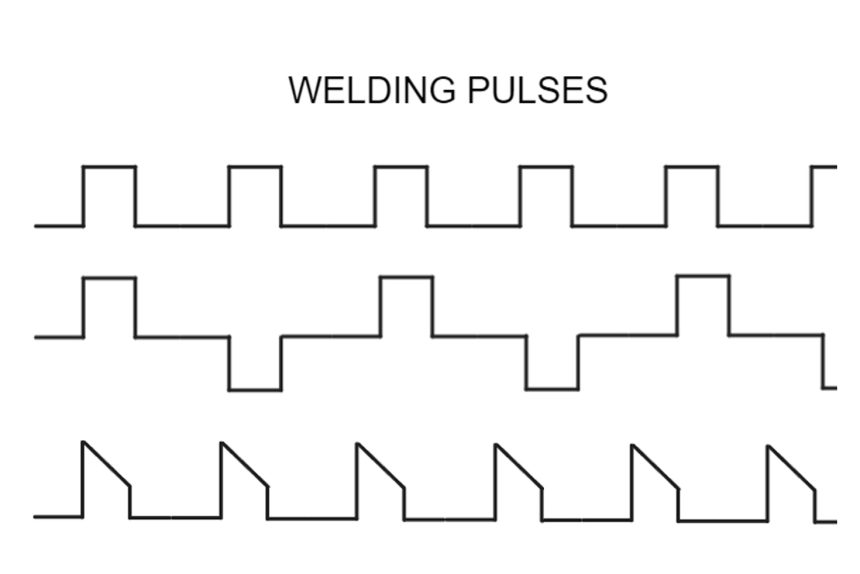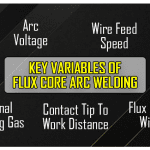When using a TIG welder to weld aluminum, it can be a challenging process due to its higher heat requirements compared to mild steel. The voltage needed for aluminum welding typically falls within the range of 21 to 24 Volts.
Read ahead to find out more about pulse welding.
Welding Town
Weld Puddle
When welding metals like aluminum, a weld puddle is formed as a result of the molten metal during the welding process. However, there are significant differences in the behavior of the weld puddle between aluminum and mild steel.
With aluminum, the formation of the weld puddle takes longer compared to mild steel. This is primarily due to aluminum’s excellent heat conductivity, which causes it to transfer heat rapidly away from the welding area. As a result, it requires more time and control to build up the weld puddle in aluminum welding.
Furthermore, aluminum’s lower melting point poses a challenge, especially for thinner sections. The heat input during welding must be carefully managed to prevent issues such as burn-through, where the thin sections of aluminum melt excessively, leading to holes or gaps in the weld.
This is where pulsed MIG welding comes into play as a beneficial process for welding aluminum. The pulsed MIG technique allows for precise control of the heat input by alternating between low and high currents in a pulsing manner. This control enables the welder to manage the weld puddle formation effectively and avoid problems like burn-through.
By using pulsed MIG welding, welders can strike a balance between providing sufficient heat for a stable weld puddle and avoiding excessive heat that may lead to burn-through in thinner aluminum sections. This level of control and management is crucial for successful and high-quality aluminum welding, as it helps prevent defects and ensures a strong and reliable weld joint.
Modified Spray Transfer Process
In welding, a spray transfer process is employed when clean and precise arcs without splatter are required. This process involves applying high voltage, and the electrode does not come into direct contact with the metal during welding. It is commonly used in MIG welding systems and results in smooth, controlled metal transfer.
However, traditional spray transfer MIG welding can only be effectively used in horizontal and flat positions. Welding out of position becomes challenging, limiting control over the welding process. To address these limitations and achieve better control for both thin and thick metals, pulsed MIG systems were developed.
In pulsed MIG welding, a modified spray transfer process is employed. This involves alternating between high peak currents and low background currents at a rapid rate, typically 30 to 400 times per second. The switching between the two current levels provides several benefits:
Peak current allows for good fusion and faster travel speeds, leading to increased productivity.
The peak current helps reduce cold lap occurrences, where a crack appears due to insufficient fusion between the molten metal and the cold surface.
The background current reduces heat input, which helps prevent warping and burn-through.
The weld puddle stays cooler, allowing for all-position welding.
By utilizing this modified spray transfer process, a pulse MIG system overcomes many of the challenges associated with spray transfer MIG welding, especially when working with aluminum. It provides better control, improved weld quality, and enhanced versatility in various welding positions, making it an excellent choice for welding aluminum and other metals.
Filler Wire Diameter
When using a pulsed MIG system, you typically use a larger filler wire diameter compared to traditional MIG welding. The diameter is typically around 0.047 inches, whereas for traditional MIG welding, it is commonly 0.030 inches. The larger diameter of the filler wire in pulsed MIG systems provides increased stiffness and better feeding performance.
Feeding performance in welding systems refers to the efficiency and reliability of the wire feed mechanism. A pulsed MIG system with a larger filler wire diameter tends to have better feeding performance. This means that the wire feeds smoothly and consistently through the system, resulting in a more stable and controlled welding process.
Improved feeding performance also enhances the deposition rate, which is the amount of filler material deposited into the weld per unit of time. The deposition rate is measured in pounds per hour (PPH). With a higher deposition rate, pulsed MIG welding offers increased efficiency and productivity, making it a cost-effective option.
In summary, pulsed MIG welding systems with larger filler wire diameters provide better feeding performance, resulting in improved deposition rates and overall efficiency in the welding process.











